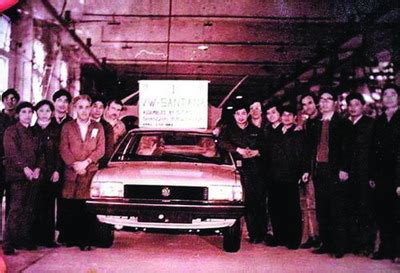Explore the origins, successes, expansion, challenges, and legacy of De Tomaso in our in-depth blog post. Discover the history of this iconic automotive company.
The Origins of De Tomaso
Contents
De Tomaso was founded in 1959 by an Argentine-Italian entrepreneur named Alejandro De Tomaso, who had a passion for racing cars. After moving to Modena, Italy, De Tomaso started designing and building racing cars, starting with a Formula 1 car in 1959. His company quickly gained attention in the racing world for its innovative designs and powerful engines.
In the early years, De Tomaso also produced road cars to fund his racing ambitions. The company’s first road car, the Vallelunga, was introduced in 1963. It featured a mid-engine layout and lightweight construction, setting the stage for the brand’s focus on high-performance sports cars.
With its roots firmly planted in racing, De Tomaso continued to produce successful sports cars throughout the 1960s and 1970s, including the Mangusta and Pantera. These cars were known for their striking designs and impressive performance, earning De Tomaso a reputation as a serious player in the automotive industry.
Despite facing financial challenges at times, De Tomaso’s dedication to precision engineering and high-speed performance allowed the company to leave a lasting mark on the world of sports cars. The origins of De Tomaso laid the foundation for its future successes, setting the stage for the innovative and stylish vehicles that would follow.
De Tomaso’s Early Successes
Founded in the late 1950s by Argentinian industrialist Alejandro De Tomaso, the De Tomaso car company quickly made a name for itself in the world of luxury sports cars. One of the company’s early successes was the release of the Vallelunga in 1963, a sleek and powerful sports car that showcased the brand’s commitment to performance and style. The Vallelunga was the first production car to feature a mid-engine layout, a design choice that would become synonymous with De Tomaso’s engineering prowess.
Another significant achievement for De Tomaso during this period was the introduction of the Mangusta in 1967. This stunning sports car was powered by a powerful V8 engine and featured a striking, low-slung design that turned heads wherever it went. The Mangusta solidified De Tomaso’s reputation as a formidable player in the high-performance automotive market, and it paved the way for even greater successes in the years to come.
One of the defining features of De Tomaso’s early successes was the company’s ability to blend Italian craftsmanship with American muscle. This unique combination allowed the company to appeal to a wide range of automotive enthusiasts, from European aficionados who appreciated the brand’s attention to detail, to American drivers who prized the raw power and performance of De Tomaso’s vehicles.
As a result of these early successes, De Tomaso firmly established itself as a leading manufacturer of luxury sports cars, earning the respect and admiration of both industry insiders and car enthusiasts around the world. The achievements of this period laid the foundation for the company’s future growth and cemented its status as an enduring icon in the automotive landscape.
Expansion and Innovation
De Tomaso Car Company experienced rapid expansion and innovative development during the 1960s and 1970s, solidifying its position in the global automotive market.
Expansion took place both in terms of the company’s product range and its international presence. In addition to their existing sports car line, the company unveiled new models such as the Deauville luxury sedan and the Longchamp grand tourer, broadening their appeal to a wider range of customers.
Furthermore, innovation was at the core of De Tomaso’s success during this period. The company pioneered the use of lightweight materials and advanced engineering techniques, resulting in vehicles that were not only powerful and stylish, but also efficient and reliable.
De Tomaso also made strategic partnerships and acquisitions with other automotive companies, incorporating new technologies and design elements into their own models. This approach to innovation allowed the company to stay ahead of the competition and maintain its status as a leader in the industry.
As a result of these expansion and innovation efforts, De Tomaso experienced a period of substantial growth and success, establishing itself as a formidable force in the automotive world.
Challenges and Changes
Throughout its history, De Tomaso faced a number of challenges and had to navigate through significant changes in the automotive industry. One of the most notable challenges was the oil crisis of the 1970s, which had a major impact on the demand for high-performance sports cars. This forced De Tomaso to rethink its strategy and focus more on fuel efficiency and alternative energy sources.
Another significant challenge for De Tomaso was the increasing competition from other luxury car manufacturers. The company had to constantly innovate and come up with new features and designs to stay ahead in the market. This led to a period of rapid change and expansion, as De Tomaso sought to diversify its product line and target new customer segments.
In addition to external challenges, De Tomaso also faced internal changes, including shifts in leadership and management. The company saw several changes in ownership and had to adapt to new corporate structures and policies. This impacted the company’s culture and operations, requiring it to adjust to new ways of doing business.
Despite these challenges and changes, De Tomaso managed to stay afloat and remain relevant in the automotive industry. The company’s ability to adapt and innovate allowed it to overcome obstacles and continue producing high-quality, sought-after vehicles.
Legacy of De Tomaso
Legacy of De Tomaso
De Tomaso’s legacy in the automotive industry is one of innovation and influence. Despite facing numerous challenges and changes throughout its history, the company has left an indelible mark on the world of sports cars and luxury vehicles. From its early successes to its expansion and innovation, De Tomaso has carved out a unique place in automotive history that continues to resonate today.
One of the key legacies of De Tomaso is its commitment to pushing the boundaries of automotive design and performance. The company’s founder, Alejandro De Tomaso, was known for his bold and ambitious approach to car manufacturing, which led to the creation of iconic models like the Pantera and Mangusta. These vehicles not only showcased the company’s engineering prowess, but also set new standards for style and performance in the sports car market.
| Legacy of De Tomaso |
|---|
| Commitment to pushing boundaries |
| Creation of iconic models |
| Setting new standards for style and performance |
De Tomaso’s legacy is also defined by its enduring impact on the automotive industry. The company’s innovations and advancements continue to influence car manufacturers and designers to this day. Whether it’s in the realm of engineering, technology, or aesthetics, De Tomaso’s legacy can be seen in the numerous sports cars and luxury vehicles that have followed in its footsteps.
While the company faced its share of challenges and changes over the years, its legacy remains a testament to the enduring spirit of innovation and excellence. De Tomaso’s impact on the world of sports cars and luxury vehicles will continue to be felt for generations to come, securing its place as a legendary name in automotive history.













